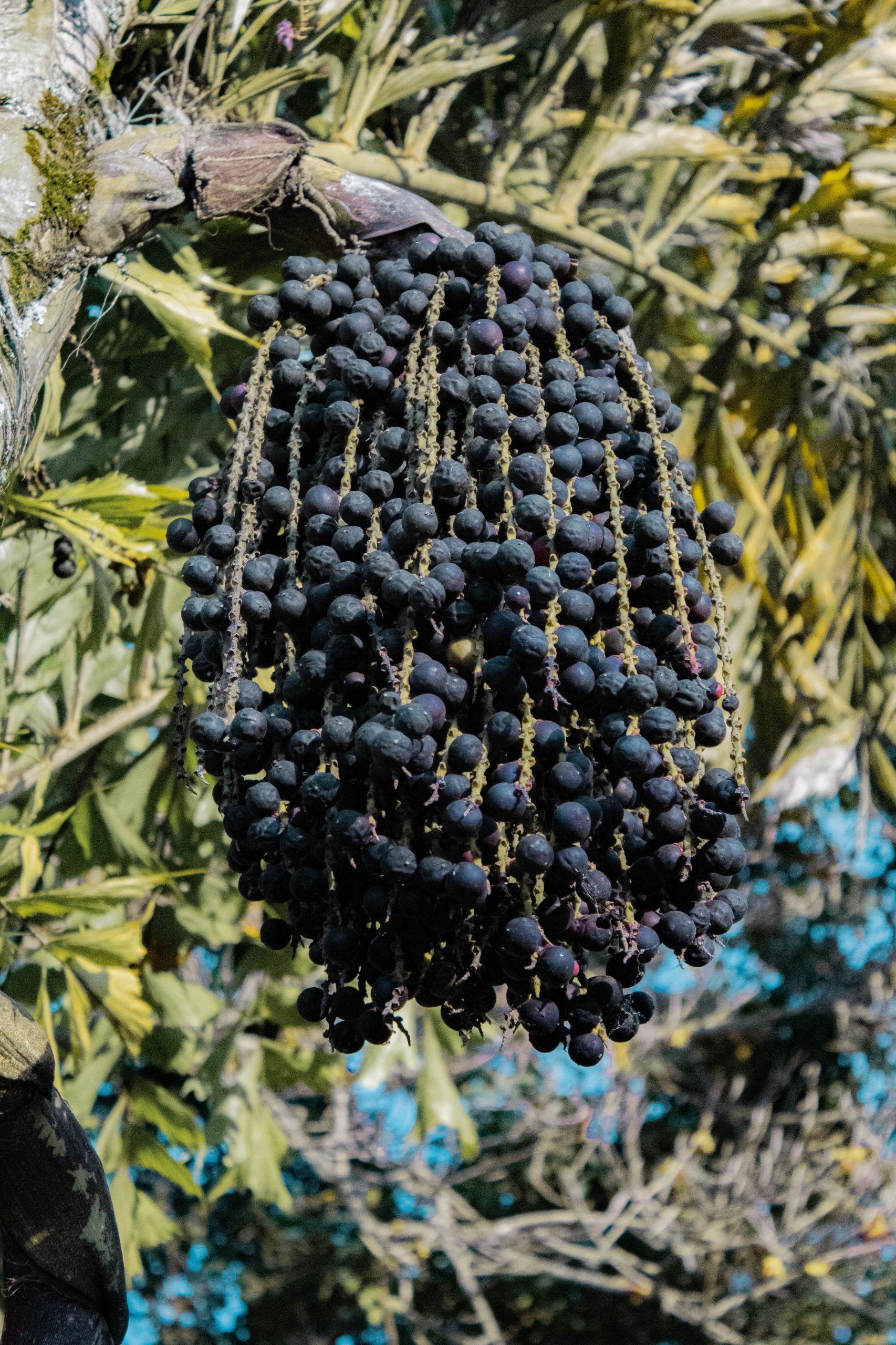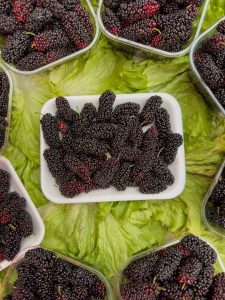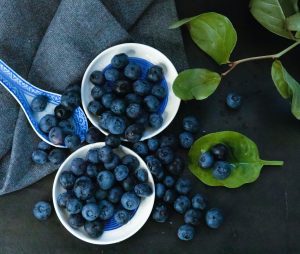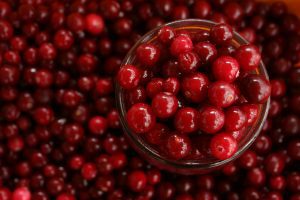
What are Acai Berries?
Acai berries, derived from the Acai palm tree native to the Amazon rainforest in South America, are small, dark purple fruits with a unique flavor profile. Renowned for their potential health benefits, acai berries are rich in antioxidants, fiber, and essential nutrients such as vitamins A and C. These berries have gained popularity as a superfood, with claims of supporting heart health, aiding in weight loss, and promoting skin health.
Typically consumed in their frozen or powdered form, acai berries are often featured in smoothie bowls, juices, and various health-oriented products. The deep purple color of the berries indicates the presence of anthocyanins, potent antioxidants linked to anti-inflammatory properties. While research on the specific health benefits of acai berries is ongoing, their nutrient density and antioxidant content contribute to their status as a nutritious addition to a balanced diet. However, it’s crucial to approach acai berries as part of an overall healthy lifestyle, and any exaggerated health claims should be viewed with caution.
Why Do We Eat Acai Berries?
People consume acai berries for various reasons, primarily due to their potential health benefits and nutritional content. Here are several reasons why acai berries are included in diets:
- Antioxidant Power:
- Acai berries are rich in antioxidants, particularly anthocyanins. These compounds have been associated with reducing oxidative stress, potentially protecting cells from damage caused by free radicals.
- Nutrient Density:
- Acai berries contain essential nutrients such as vitamins (A and C), minerals, and dietary fiber. Including acai berries in the diet contributes to overall nutrient intake.
- Heart Health:
- Some studies suggest that the antioxidants in acai berries may have a positive impact on cardiovascular health by promoting healthy cholesterol levels and supporting blood vessel function.
- Weight Management:
- Acai berries are sometimes linked to weight loss due to their fiber content, which may contribute to a feeling of fullness. However, it’s important to note that no single food can guarantee weight loss, and a balanced diet and exercise are key factors.
- Anti-Inflammatory Properties:
- The antioxidants in acai berries may have anti-inflammatory effects, potentially benefiting conditions associated with inflammation in the body.
- Skin Health:
- Acai berries are often promoted for their potential benefits to skin health. The antioxidants and vitamins they contain may contribute to a healthy complexion.
- Energy Boost:
- Some individuals consume acai berries for a natural energy boost. The combination of nutrients, including carbohydrates, can provide a quick source of energy.
- Delicious Flavor:
- Acai berries have a unique and pleasant flavor profile, described as a mix of berries with a hint of chocolate. This makes them a tasty addition to various dishes, such as smoothie bowls, juices, and desserts.
While acai berries offer potential health benefits, it’s important to approach them as part of a balanced and varied diet. It’s also crucial to be mindful of marketing claims and understand that individual responses to foods can vary. Consulting with a healthcare professional or a registered dietitian is recommended for personalized dietary advice.
When Do We Eat Acai Berries?
Acai berries can be consumed at various times of the day and incorporated into different meals and snacks. Here are some common occasions and ways people eat acai berries:
- Acai Bowls for Breakfast:
- A popular way to enjoy acai berries is in the form of acai bowls, typically consumed as a nutritious breakfast. These bowls often include a blend of frozen acai puree, other fruits, granola, nuts, seeds, and sometimes yogurt.
- Smoothies:
- Acai berries can be added to smoothies for a burst of antioxidants and a unique flavor. Combine them with other fruits, greens, and a liquid base like almond milk or coconut water for a refreshing beverage.
- Snacking:
- Dried or freeze-dried acai berries make for convenient and healthy snacks. They can be eaten on their own or mixed with other dried fruits and nuts.
- Acai Beverages:
- Acai berry juice or acai-flavored beverages are available and can be enjoyed on their own or as part of a refreshing drink.
- Desserts:
- Incorporate acai berries into desserts such as sorbets, ice creams, or even as a topping for cakes and puddings.
- Salads:
- Some people add acai berries to salads for a sweet and tangy element. They pair well with various greens, nuts, and vinaigrettes.
- Trail Mix:
- Mix dried acai berries with nuts, seeds, and other dried fruits to create a flavorful and nutritious trail mix.
- Acai Supplements:
- Acai berry supplements, such as capsules or powders, are also available for those who prefer a concentrated form of the berry’s nutrients.
Whether enjoyed as a standalone snack, incorporated into meals, or blended into beverages, acai berries offer versatility and a unique flavor profile. It’s essential to choose high-quality sources and be mindful of added sugars when consuming acai products. As with any food, moderation is key, and individual preferences may vary.
Ingredients of Acai Berries
Acai berries themselves are the primary ingredient when referring to the actual fruit. However, when acai berries are used in various products such as acai bowls, smoothies, or supplements, additional ingredients may be included. Here are the ingredients commonly associated with acai-based products:
- Acai Berries:
- The main component, either in the form of acai berry puree, freeze-dried powder, or acai berry extract.
- Liquid Base:
- Commonly, a liquid base is used to blend acai berries into smoothies or bowls. This can include water, coconut water, almond milk, soy milk, or other fruit juices.
- Additional Fruits:
- A variety of fruits may be added for flavor, texture, and additional nutrients. Common choices include bananas, berries, mangoes, and pineapples.
- Sweeteners:
- Some recipes may include natural sweeteners like honey, agave nectar, or maple syrup. However, the sweetness from the fruits is often sufficient for many people.
- Granola:
- A popular topping for acai bowls, granola adds crunch and complements the creamy texture of the acai base.
- Nuts and Seeds:
- Almonds, chia seeds, flaxseeds, or other nuts and seeds are often sprinkled on top for added protein, healthy fats, and texture.
- Yogurt or Dairy Alternatives:
- Acai bowls may be blended with yogurt or dairy alternatives like coconut yogurt for creaminess.
- Nut Butters:
- Some recipes incorporate nut butters such as almond butter or peanut butter for added richness and flavor.
- Ice:
- When making acai smoothies or bowls, adding ice helps achieve a thicker, colder consistency.
It’s important to check product labels if you’re purchasing pre-made acai products, as they may contain additional ingredients such as preservatives, stabilizers, or sweeteners. Homemade acai creations allow for more control over the ingredients and can be tailored to individual preferences and dietary needs.
Types of Acai Berries
There is one primary species of acai berry that is commonly consumed, and that is the fruit of the Acai palm tree (Euterpe oleracea). The Acai palm is native to the Amazon rainforest in South America, primarily found in Brazil.
While there may be some variations in acai berries based on factors such as growing conditions and geographical regions within the Amazon, there is generally only one recognized species that produces the acai berries used in culinary and dietary contexts.
It’s worth noting that acai berries are highly perishable, and they are typically processed into various forms, such as frozen puree, freeze-dried powder, or acai juice, for preservation and convenience. These processed forms are often used in making acai bowls, smoothies, and other acai-based products.
When choosing acai products or supplements, it’s essential to consider the source, quality, and processing methods, as well as any additional ingredients that may be included in the final product. Selecting products from reputable sources helps ensure the authenticity and nutritional integrity of the acai berry content.
Signs of Ripe, Signs of Raw and Signs of Rotten Acai Berries
Acai berries are typically processed and sold as frozen puree, freeze-dried powder, or acai juice rather than in their fresh, whole form, as they perish rapidly after harvesting. Therefore, the signs of ripeness, rawness, or spoilage are more relevant to the processed forms of acai products. Here are some general considerations for each:
Signs of Ripe Acai Products:
- Color:
- In frozen puree or freeze-dried powder, look for a rich, dark purple color, which is characteristic of ripe acai berries. However, the color can vary slightly depending on processing methods.
- Texture:
- Acai puree should have a smooth and consistent texture, while freeze-dried powder should be fine and free-flowing.
Signs of Raw Acai Products:
- Label Information:
- In processed forms, such as freeze-dried powder or acai juice, the product should be labeled as raw or minimally processed if it retains more of the fruit’s natural characteristics.
- Minimal Additives:
- Raw acai products typically have minimal additives and are processed at lower temperatures to preserve more nutrients.
Signs of Spoiled or Rotten Acai Products:
- Off Odor:
- If the acai product has a foul or unusual odor, it may indicate spoilage. Acai products should generally have a mild, berry-like scent.
- Mold or Discoloration:
- Visible signs of mold or unusual discoloration on the product indicate spoilage. Check for any changes in color or the presence of dark spots.
- Texture Changes:
- For frozen acai puree, changes in texture such as freezer burn or ice crystals may suggest improper storage or spoilage.
- Unpleasant Taste:
- Spoiled acai products may have an off or sour taste. If the product tastes different from what is expected, it could be a sign of spoilage.
It’s important to follow proper storage guidelines for acai products, whether they are in frozen, powder, or juice form, to maintain their quality and prevent spoilage. Always check the product label for information on processing methods and additives, and be attentive to any signs of changes in color, texture, or odor that may indicate spoilage.
Summary
Acai berries, derived from the Acai palm tree native to the Amazon rainforest, are small, dark purple fruits known for their rich nutritional profile and potential health benefits. Packed with antioxidants, vitamins, and minerals, acai berries are often processed into frozen puree, freeze-dried powder, or juice for consumption. Commonly featured in acai bowls and smoothies, they offer a unique flavor with a hint of chocolate and are celebrated for potential benefits such as supporting heart health, providing antioxidants, and contributing to skin health. While marketed as a superfood, it’s important to approach acai berries as part of a balanced diet, and individual responses to their touted health benefits may vary.






